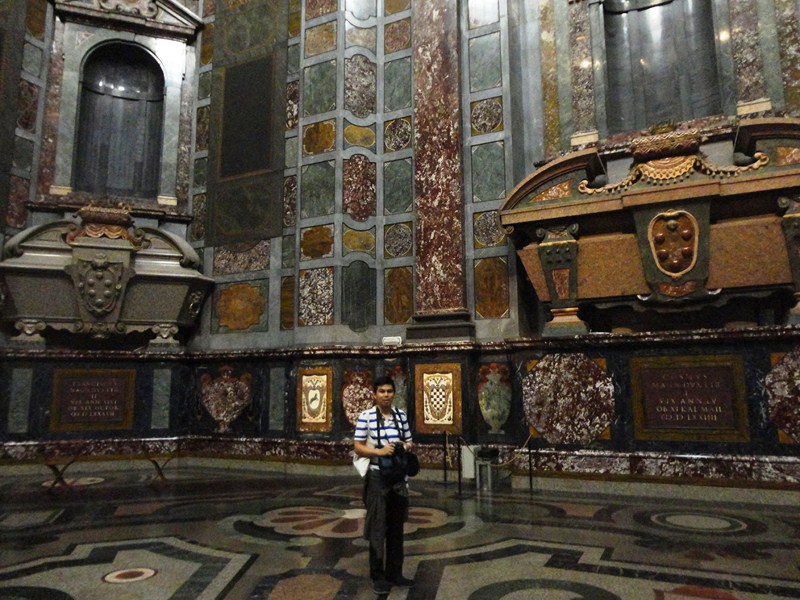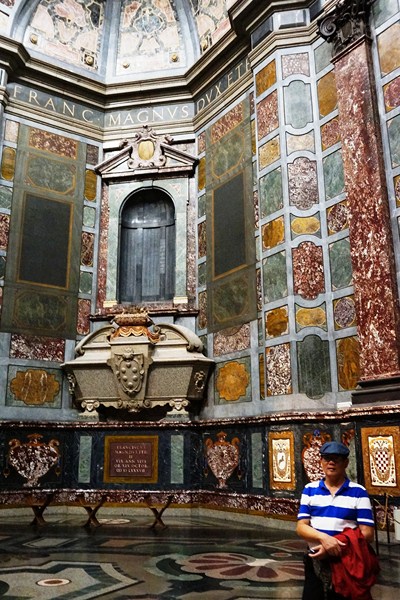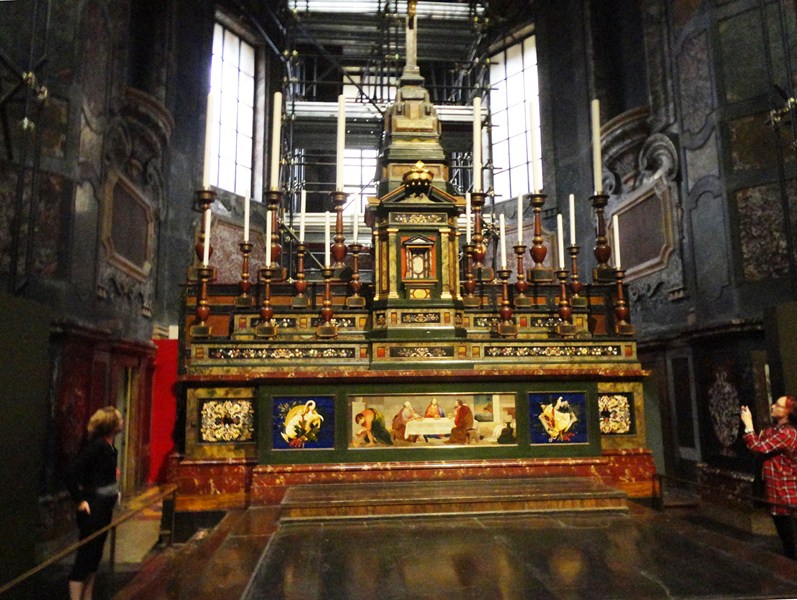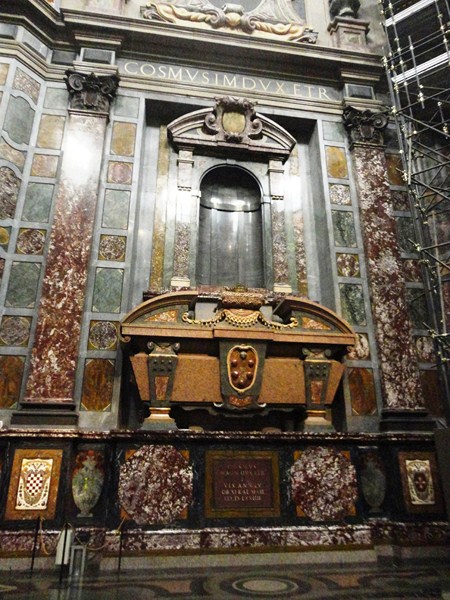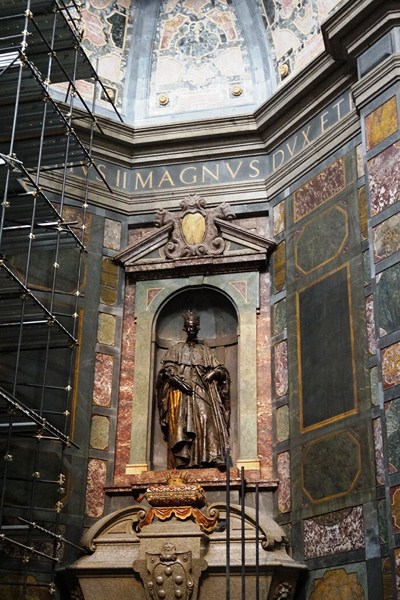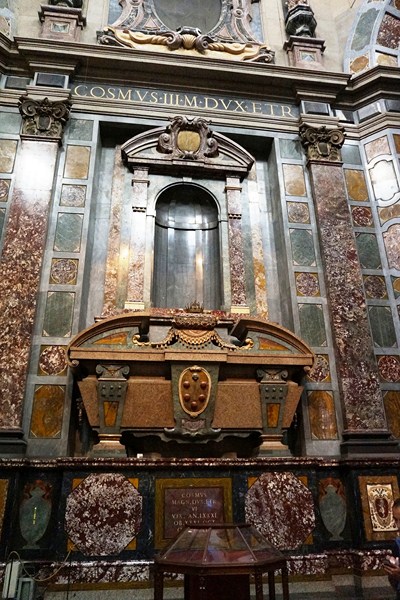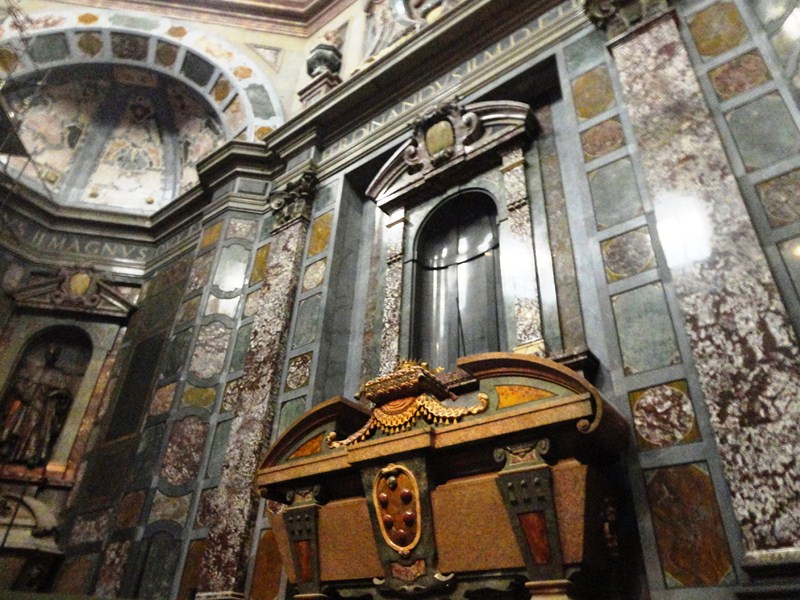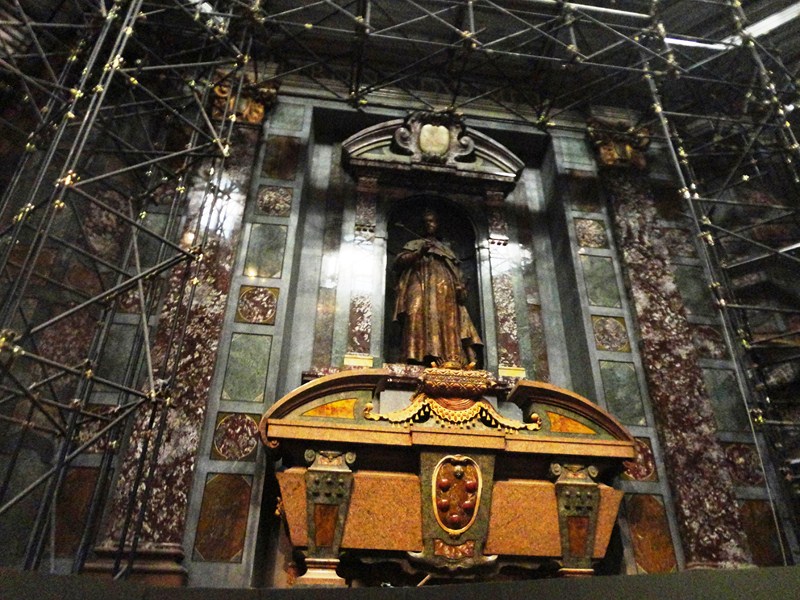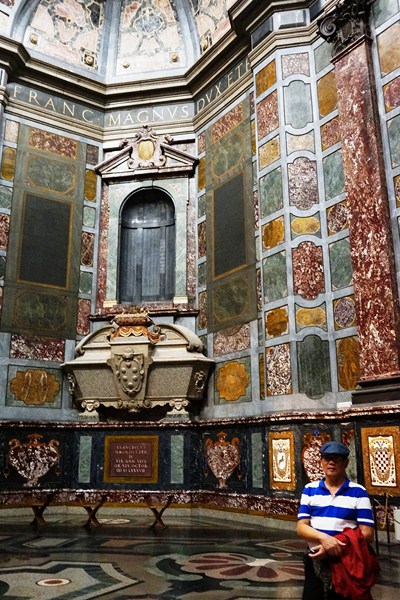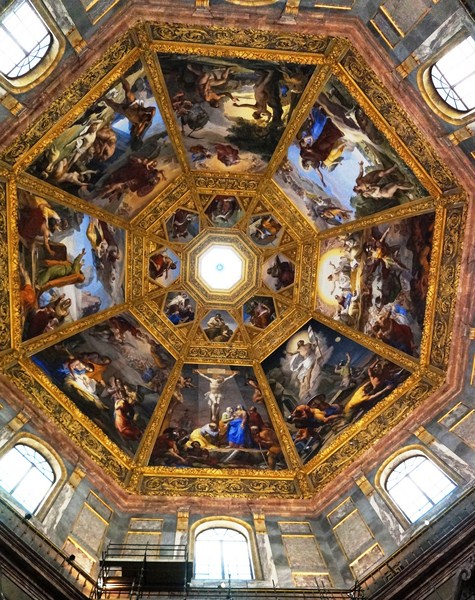The larger, opulent Chapel of the Princes (Cappella dei Principi), a true expression of court art and a rare example in Florence of the Baroque style, was the result of collaboration among architects and family. An idea formulated by Cosimo I in the 16th century, it was put into effect by Ferdinand I de’ Medici in the early 17th century (1604 to 1640).
Check out “Medici Chapels“
The chapel was designed by architect Matteo Nigetti (1560-1649), following some sketches tendered to an informal competition of 1602 by Don Giovanni de’ Medici, the natural son of Cosimo I, Grand Duke of Tuscany who practiced architecture in a semi-professional way, which were altered in the execution by the aged Bernardo Buontalenti.
The huge, beautiful cupola and lavish interior of this mausoleum were conceived as monuments to the greatness of the Medici. The chapel’s tall, 59 m. (185-ft.) high dome, the distinguishing feature of the Basilica of San Lorenzo when seen from a distance, is on the same axis as the nave and chancel to which it provides the equivalent of an apsidal chapel. From the exterior, its entrance is in Piazza Madonna degli Aldobrandini and through the low vaulted crypt planned by Bernardo Buontalenti (before plans for the chapel above were made).
Its sumptuous, jaw-dropping octagonal interior, conceived to hold the grand ducal tombs, is completely covered with hard stones or marble, mainly of foreign origin. The six grand and princely sarcophagi (all empty as the Medici remains are unceremoniously laid to rest in the crypt below), with cenotaphs carved in porphyry and grey granite, are each set into a different wall and embellished with a dedicatory inscription and a grand-ducal crown.
They were supposed to have bronze statues of the Grand Dukes (Cosimo I, Francesco I, Ferdinando I, Cosimo II, Ferdinando II, and Cosimo III) set into niches but only two (for Ferdinando I and Cosimo II) of the niches have portrait sculptures of Medici, both executed by Pietro Tacca (1626–42). The dado has 16 compartments with coats-of-arms of Tuscan cities under Medici control.
The Opificio delle Pietre Dure (Semi-Precious Stones Workshop), the Grand Ducal hardstone workshop, was established for the execution (which lasted for three centuries) of its astonishing revetment of marbles inlaid with colored marbles and hard semi-precious stone. To form the designs of the revetment that entirely cover the walls, jig-sawn fragments of specimen stones assembled via the art of commessi, as it was called in Florence.
On account of the difficulty of obtaining such rare materials as well as difficulties of working the materials and their very high cost, the process of covering the walls, mainly carried out in the seventeenth and eighteenth centuries, was fraught with problems.
The inlay of semi-precious stones wasn’t finished until 1962. Many 18th- and 19th-century visitors disapproved of the result but, today, it has come to be appreciated for an example of the taste of its time.
The cupola originally should have had an internal covering of lapis lazuli but, at the end of the Medici period, was left incomplete. In 1828, at the command of Grand Duke Leopold II of the then reigning house of Lorraine, it was frescoed, with scenes from the Old and New Testaments, by Pietro Benvenuti.
Medici Chapels: Piazza Madonna degli Aldobrandini 6 (at the back of the Basilica of San Lorenzo), Florence, Italy. Open daily, 8:15 AM to 2 PM (ticket office closes at 1:20 PM). Closed on the 2nd and 4th Sunday of every month and 1st, 3rd and 5th Monday of every month as well as New Year’s Day, May 1 and Christmas. Admission: €8,00. Free entry for all visitors on the first Sunday of every month between October and March.

